Name SMS Zenta Builder Pola Naval Arsenal Commissioned 25 May 1899 Construction started 8 August 1896 Length 97 m | Namesake Senta Laid down 8 August 1896 Fate Sunk, 16 August 1914 Launched 18 August 1897 | |
 | ||
SMS Zenta was a small protected cruiser built for the Austro-Hungarian Navy in the late 1890s. She was lead ship of her class and named after the Battle of Zenta.
Contents
- Design and description
- Service history
- Boxer Rebellion
- South American cruise
- World War I
- Honors
- References

Design and description
Zenta was conceived to show the flag abroad.
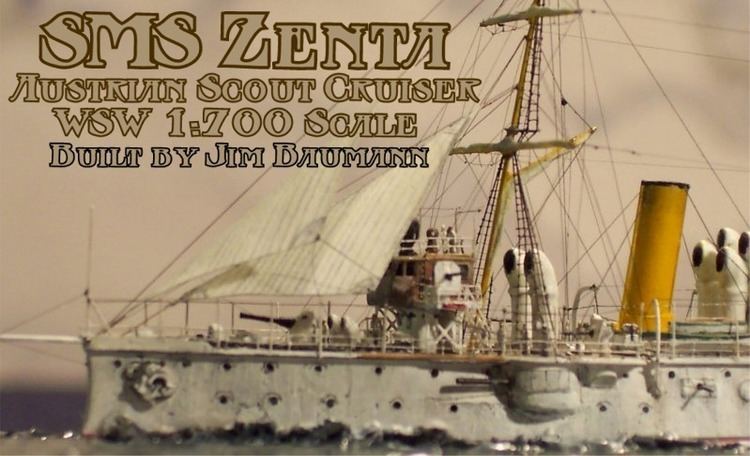
Zenta had an overall length of 96.88 meters (317 ft 10 in), a beam of 11.73 meters (38 ft 6 in) and had a designed draft of 4.43 meters (14 ft 6 in). The ship displaced 2,350 metric tons (2,310 long tons) at normal load and 2,543 metric tons (2,503 long tons) at deep load.
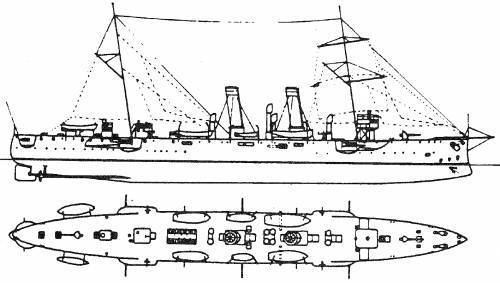
She had two four-cylinder vertical triple-expansion steam engines, each driving a single propeller shaft. Steam for the engines was provided by eight Yarrow boilers and they made an average total of 8,160 indicated horsepower (6,080 kW) during her sea trials on 30 March 1899. The average maximum speed during the trials was 20.8 knots (38.5 km/h; 23.9 mph), but Zenta achieved a maximum speed of 21.87 knots (40.50 km/h; 25.17 mph) from 8,584 indicated horsepower (6,401 kW). She carried up to 469 metric tons (462 long tons) of coal and could steam for 3,500 nautical miles (6,500 km; 4,000 mi) at a speed of 10 knots (19 km/h; 12 mph).

Zenta's main armament consisted of eight 40-caliber Škoda 12-centimeter (4.7 in) quick-firing guns. Two of these were mounted fore and aft of the superstructure in single pivot mounts protected by gun shields while the other six guns were mounted in casemates on the sides of the hull. Her secondary armament comprised eight 44-caliber 4.7-centimeter (1.9 in) Škoda guns and two 33-caliber 4.7-centimeter Hotchkiss guns. Four of these guns were mounted on pivot mounts in the superstructure and the remaining guns were in casemates in the hull. She was also armed with two 45-centimeter (17.7 in) torpedo tubes mounted in the hull above the waterline.
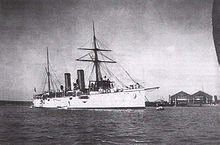
The ship was lightly protected by an armor deck that consisted of two layers of 12.5-millimeter (0.49 in) plates. Over the engine and boiler rooms the thickness doubled to a total of 50 millimeters (2.0 in). The casemates were protected by 35 millimeters (1.4 in) of armor and the conning tower by two layers of 25-millimeter (0.98 in) armor plates.
Service history
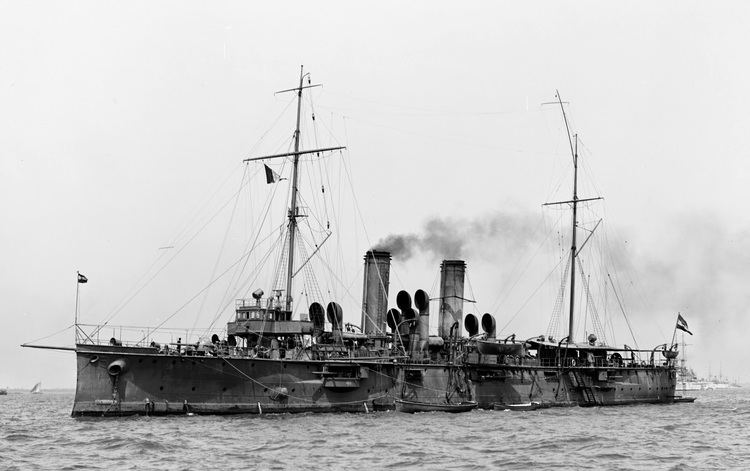
Zenta was laid down at the Pola Naval Arsenal on 8 August 1896 and she was launched on 18 August 1897. The ship was completed on 25 May 1899, commissioned three days later, and left Pola on 10 November 1899 for a cruise to Asia, calling at Port Said, Suez, Aden, and Colombo. She reached Singapore in January 1900 where she stayed for 14 days, continuing her voyage to Hong Kong, Macau, and onwards to Shanghai. Thereafter she went to Japan, visiting Nagasaki, Kagoshima, and Sasebo.
Boxer Rebellion
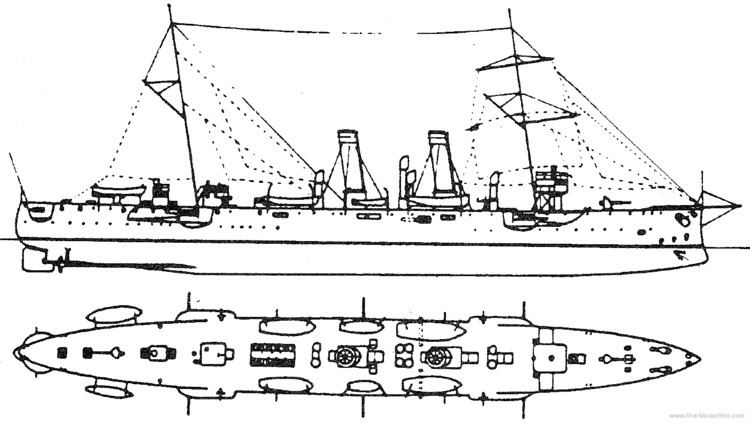
News reached Austria-Hungary that the Boxer Rebellion in China was fast getting worse. Zenta was recalled to assist in the evacuation of international embassy staff as well as the Austro-Hungarian delegation. Seventy-five members of her crew were attached to the relief expedition led by Admiral Seymour, which headed for Tientsin.
Zenta was joined by the armoured cruiser SMS Kaiserin und Königin Maria Theresia, and 160 sailors from both ships (and two landed guns) assisted German marines in the assaults on the Taku forts. Zenta had her commanding officer, Kapitän Eduard Thomann Edler von Montalmar, killed in the action.
South American cruise
She returned home in December 1901 and was placed in reserve until October 1902 when she was sent on another foreign tour to Cape Town. From there she sailed for South America, to Montevideo and then to Buenos Aires, arriving in May 1903. She then went to Rio de Janeiro in June before heading back across the Atlantic, visiting among other ports Funchal, Cadiz, Tangier, Málaga, Tunis and Corfu prior to returning home to Trieste. Thereafter she was placed in reserve and partook in annual naval exercises until the outbreak of the First World War.
World War I
On 16 August 1914 the combined Anglo-French Fleet under Admiral Auguste Boué de Lapeyrère, made a sweep of the Adriatic Sea. Zenta was escorted by a destroyer blockading the coast of Montenegro. She was trapped by seventeen French and British naval units consisting of battleships and armoured cruisers, which prevented her escape North. After allowing the destroyer SMS Ulan to get away, she was sunk by gunfire during the Battle of Antivari off the coast of Bar, Montenegro, with the loss of 179 lives. Surviving commander Paul Pachner, officers and crew swam ashore and were interned until 1916 (the Anglo-French Fleet did not attempt to rescue any survivors). The imprisoned crew were Croats from Blato na Korčuli, Šolta, Tisno, Biograd na Moru, Bogomolje, Rab, Imotski, Hvar, Trogir, Split, Šibenik, Vela Luka, Sali and Zadar and two Montenegrins from Grbalj and Perast.
Honors
To honor the crew of this ship, a small bay (formerly Kalafatić) in Split was named after this ship.
